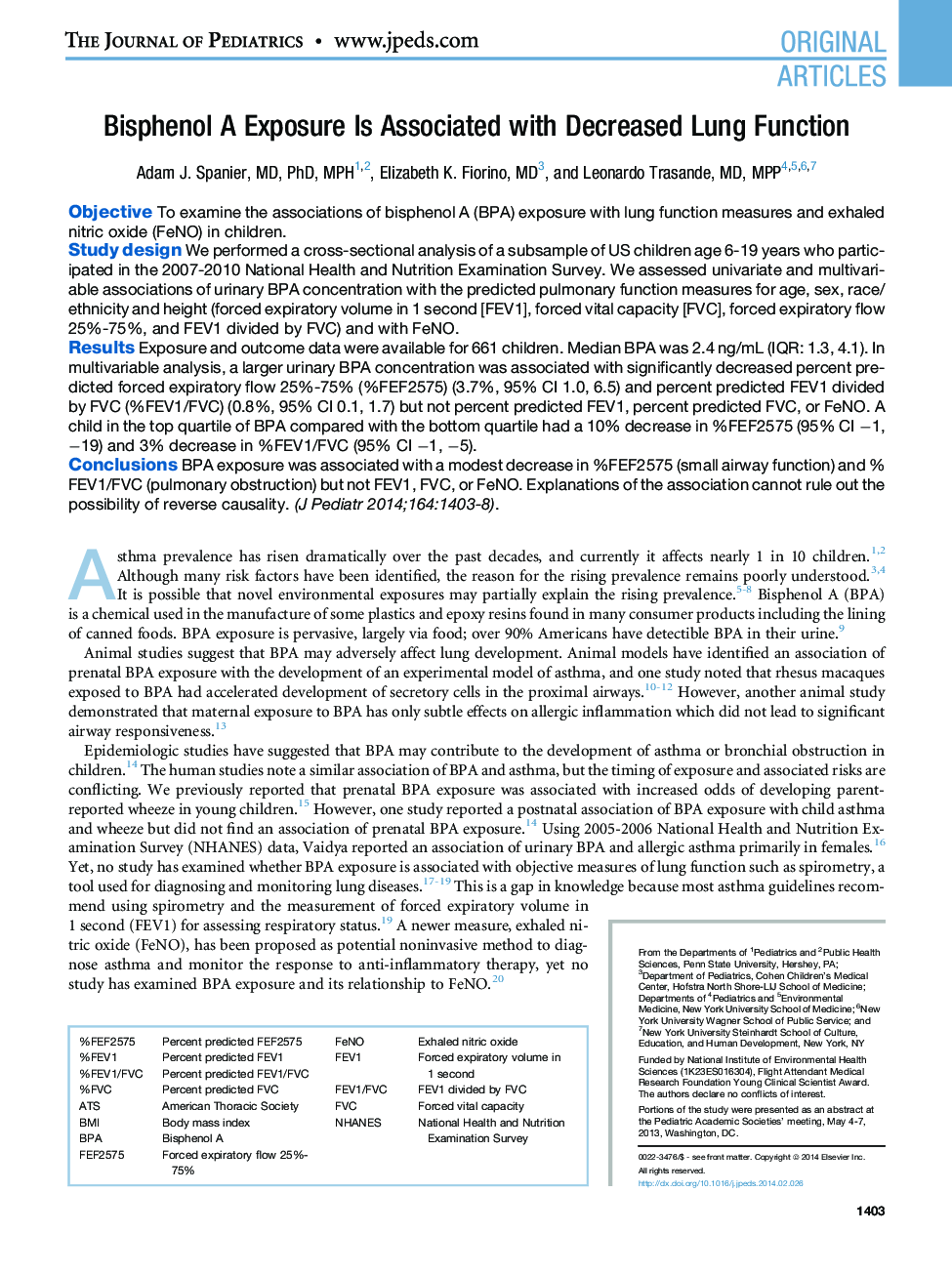| Article ID | Journal | Published Year | Pages | File Type |
|---|---|---|---|---|
| 6220677 | The Journal of Pediatrics | 2014 | 7 Pages |
ObjectiveTo examine the associations of bisphenol A (BPA) exposure with lung function measures and exhaled nitric oxide (FeNO) in children.Study designWe performed a cross-sectional analysis of a subsample of US children age 6-19Â years who participated in the 2007-2010 National Health and Nutrition Examination Survey. We assessed univariate and multivariable associations of urinary BPA concentration with the predicted pulmonary function measures for age, sex, race/ethnicity and height (forced expiratory volume in 1Â second [FEV1], forced vital capacity [FVC], forced expiratory flow 25%-75%, and FEV1 divided by FVC) and with FeNO.ResultsExposure and outcome data were available for 661 children. Median BPA was 2.4Â ng/mL (IQR: 1.3, 4.1). In multivariable analysis, a larger urinary BPA concentration was associated with significantly decreased percent predicted forced expiratory flow 25%-75% (%FEF2575) (3.7%, 95% CI 1.0, 6.5) and percent predicted FEV1 divided by FVC (%FEV1/FVC) (0.8%, 95% CI 0.1, 1.7) but not percent predicted FEV1, percent predicted FVC, or FeNO. A child in the top quartile of BPA compared with the bottom quartile had a 10% decrease in %FEF2575 (95% CI â1, â19) and 3% decrease in %FEV1/FVC (95% CI â1, â5).ConclusionsBPA exposure was associated with a modest decrease in %FEF2575 (small airway function) and %FEV1/FVC (pulmonary obstruction) but not FEV1, FVC, or FeNO. Explanations of the association cannot rule out the possibility of reverse causality.
